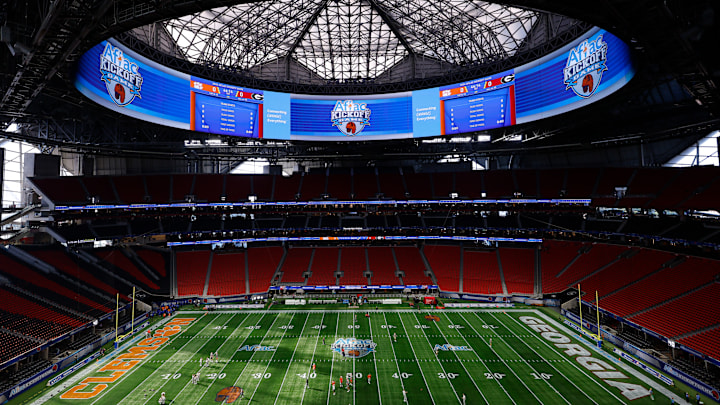Let’s be honest—nothing beats a college football Saturday on campus. The tailgates, the traditions, the student sections erupting in chaos as their team takes the field. It’s the heart and soul of what makes the sport so different, so beloved. But as much as fans cherish home-and-home showdowns, there's a powerful force pulling the sport in a new direction: money.
And not just a little money—millions.
In 2026, Georgia and Florida are moving their annual rivalry game to Atlanta’s Mercedes-Benz Stadium. The price tag for the move? A whopping $7.5 million for each school. That’s $15 million total for a single afternoon of football. It's not a permanent relocation—the World’s Largest Outdoor Cocktail Party will eventually return to Jacksonville—but the financial windfall from moving the game shows just how lucrative these neutral-site matchups have become. They'll get paid upwards of $10 million once they move back to Jacksonville.
So while nobody’s clamoring to abandon campus games altogether, the writing's on the wall. With TV deals ballooning and athletic departments always chasing the next big payday, college football could be staring down an era where neutral-site games aren’t just for Week 1 showdowns—they become a staple.
Why Neutral-Site Games Make Financial Sense
The appeal is simple: neutral-site games in NFL stadiums offer schools guaranteed revenue, exposure in major markets, and a chance to deliver spectacle. Let’s say Alabama and Texas A&M decide to play in Dallas at AT&T Stadium.
The gate revenue alone—split between schools—is likely to top what either would make by hosting the game on their own campus. Add in sponsorships, suites, and corporate partnerships tied to these NFL-caliber venues, and suddenly you’re not just talking about a football game. You’re talking about a financial event.
For comparison, many athletic departments barely break even on their football operations after covering travel, salaries, and facility upkeep. But one game in a major venue? That could pay a coordinator's salary, fund recruiting efforts, or help cover NIL initiatives.
The Big Names That Could Be Next
If this trend continues—and let’s be real, why wouldn’t it?—expect to see more matchups like:
- Alabama vs. Texas A&M at AT&T Stadium in Arlington
- Clemson vs. Florida State at Mercedes-Benz Stadium in Atlanta
- Michigan vs. USC at Allegiant Stadium in Las Vegas
- Oregon vs. Ohio State at SoFi Stadium in L.A.
Imagine the marketing potential. These aren’t just games—they’re events. ESPN, FOX, and whoever else is broadcasting would line up to slap their logos on these matchups, knowing the viewership would soar.
And fans? As much as they grumble about losing a home game, plenty are still going to buy tickets, book flights, and turn it into a weekend trip. Especially when it’s a dome in October rather than a potentially freezing stadium in late November.
I don't like it at all, but that's where the trend is heading.
